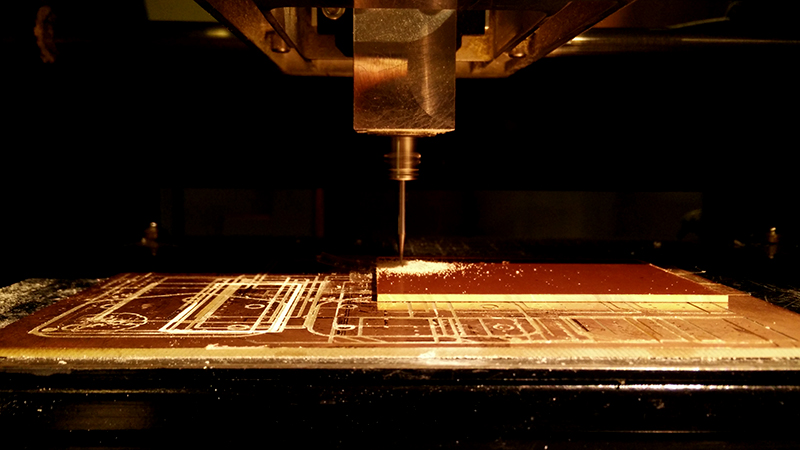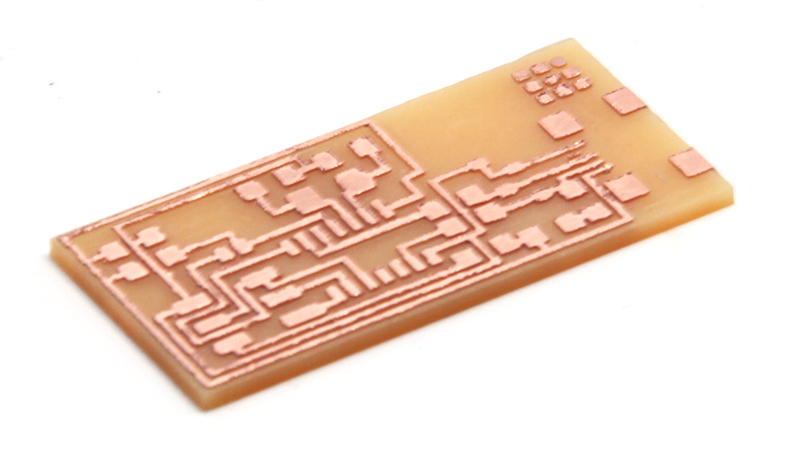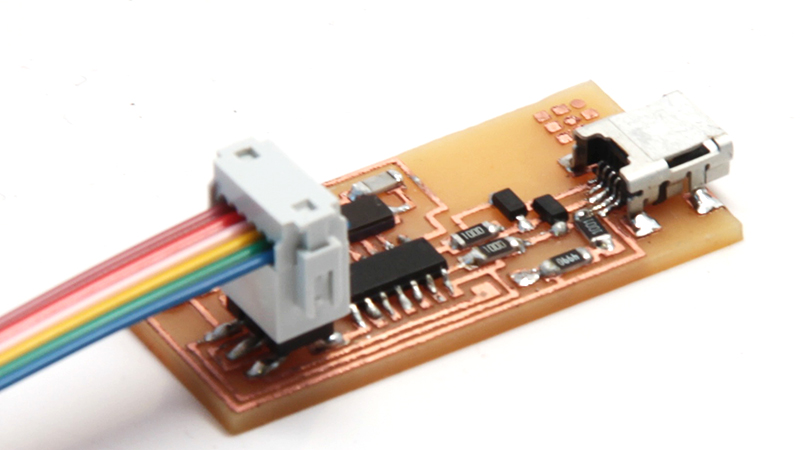Fabmodules.org | Modela | iron
The fabISP or fabricable in system programmer is as it sounds, a minimalist but powerful microcontroller to be quickly and easily hand fabricable. It's minimal in size and in number of components, and for myself was a wonderful step by step intro into some finer soldering and program flashing than I'd ever done before.

The first part of the process seems, to me, to be the the key for a homemade microcontroller. While it's totally possible to use commercial circuit architecture CAD programs and send away for board, in roughly 20 minutes with the Roland cnc router and the CBA fabmodules interface I was able to fabricate my own circuit board. This also leaves plenty of room for flexibility of circuit logic/design, and ease of design iteration.

The finished product only needs light abrasion to esure the traces are flat, for which I used steel wool. I rand a small clay crafting tool around the traces as well to get rid of any excess copper still stuck between them to prevent any shorts. As a final check, a multimeter is used to test connections, making sure that traces intended to be complete are and traces that should be separate are as well. Now the board is ready to be stuffed.

The circuitry consists of a microchip, a resonating crystal, two diodes, three capacitors, a small variety of resistors, and two 'jumpers,' or zero resistance connections that can 'jump' a trace over another. These would be removed later to change the logic of the circuit once a program has been flashed to it. Flashing requires a setup of depedences, in my case through the homebrew dependency organizer running in the Mac OS X terminal. AVR-gcc is a homebrew 'library' or dependency that can program AVR or SAM micocontrollers using a usb connected device which can connect ot 6- or 10-pin controllers. Once the program, available on the fabacademy site, is flashed to the controller, the circuit can be changed, and the usb power connection becomes power and data. Once the fabISP is connected by USB it will show up with it's name and properties when the USB is probed. Presumably it can now be used as a microcontroller for other things as well.
